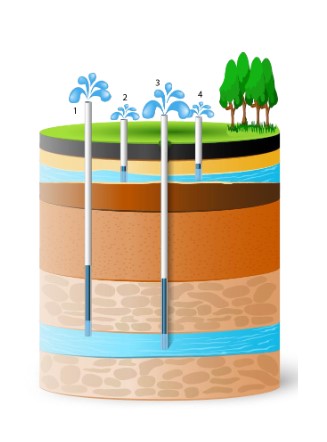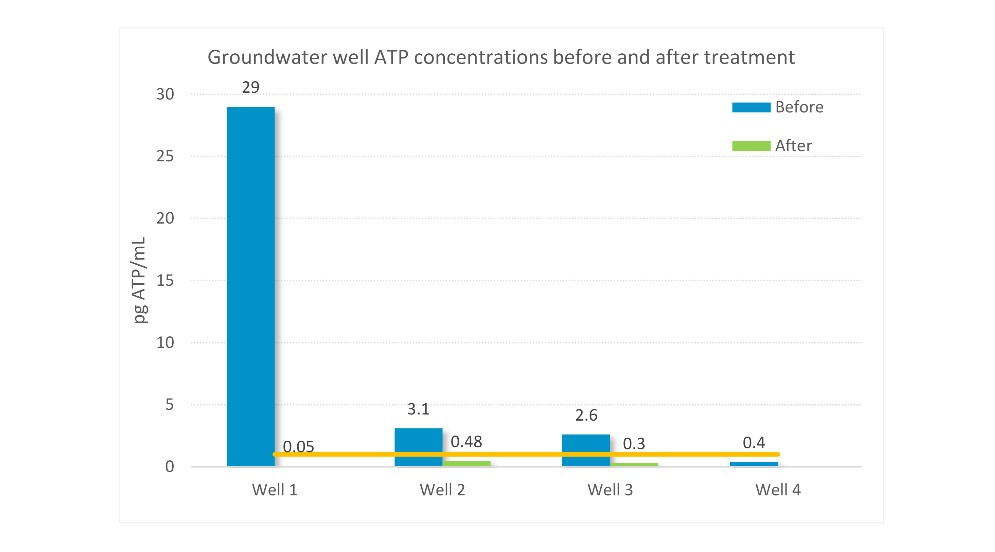What’s inside
Learn how ATP testing allowed technicians to instantly pinpoint the source of contamination, remediate, and place wells back in service – all in the same shift.
Background
A U.S. drinking water treatment facility was having difficulty maintaining chlorine residual levels in their distribution system and was receiving frequent taste and odor complaints from consumers.
Standard remediation strategies like flushing and equipment maintenance were not effective. Technicians suspected one or more of their four groundwater wells was experiencing excess microbiological growth so HPC (heterotrophic plate count) testing was done on all four wells. In all cases, no biological growth was detected so ATP testing and BART (biological activity reaction tests) were conducted to further investigate potential microbiological contamination.
Results
Technicians performed ATP testing with LuminUltra’s QGA test kit and IRB (iron-related bacteria) BART analyses on each of the four wells.
TP results immediately indicated that Well 1 was significantly contaminated with ATP levels of 29 pg ATP/mL, well above the 1 pg ATP/mL target for potable water. Wells 2 and 3 were also experiencing moderate growth with results of 3.1 and 2.6 pg ATP/mL respectively. Well 4 was found to be in good control with less than 0.5 pg ATP/mL.
Technicians decided to shock wells 1, 2,and 3 with chlorine, recharge them, and then retest with the QGA method to confirm water quality.
After treatment, microbiological growth was found to be in good control with ATP levels below 0.5 pg ATP/mL and the wells were put back into service. Four days later, BART results confirmed that iron-related bacteria had been present in Well 1.
Conclusions
Efficiently managing your treatment system requires a variety of microbial monitoring tools. While BART analyses allow operators and technicians to identify the types of microorganisms present in their system, having a field-ready microbiological test that offered immediate results allowed technicians to instantly pinpoint the source of contamination, remediate, and place wells back in service –all in the same shift.









